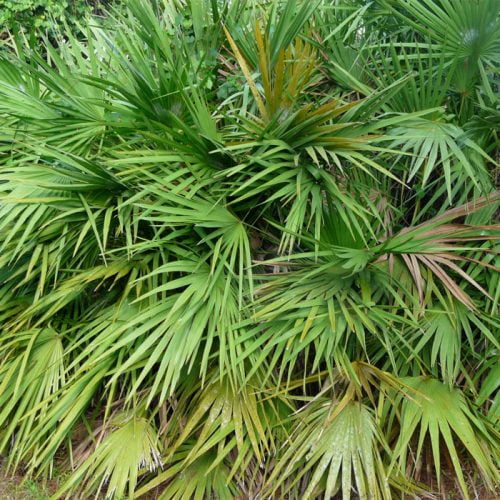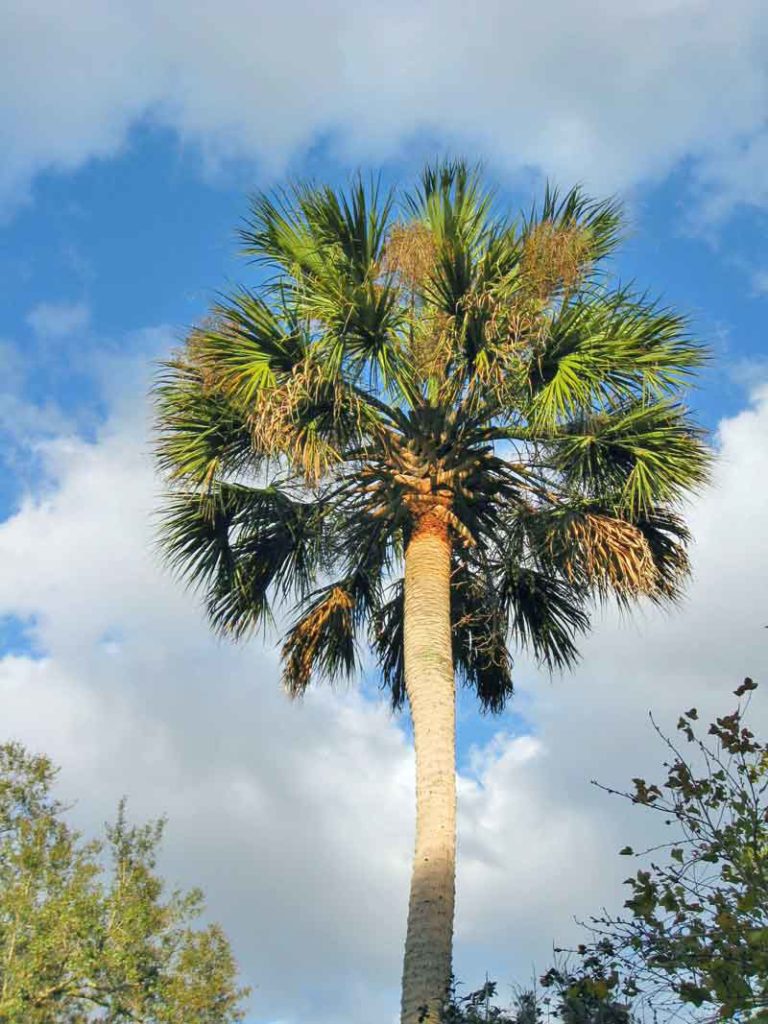Sabal etonia (Scrub Palmetto) and Sabal minor (Dwarf Palmetto) are both species within the Sabal genus and are native to the southeastern United States. They share certain similarities but also have distinct differences:
Habitat:
- Sabal etonia (Scrub Palmetto): Typically found in sandy soils, especially in Florida scrub habitats.
- Sabal minor (Dwarf Palmetto): Prefers wetter areas, often found in swamps, floodplains, and along stream banks.

5 Florida-Native Saw Palmetto Seeds (Serenoa repens)
Saw Palmetto Seeds: Embark on a botanical journey with these native gems, perfect for cultivating a piece of Southeastern U.S. wilderness in your own space.
Includes 5 Saw Palmetto drupes. USDA Zones 8-11. 100% dormant/hardened.
Trunk and Growth:
- Sabal etonia: Usually trunkless or with a very short trunk, it tends to grow in a clumping form with multiple stems.
- Sabal minor: Typically trunkless with leaves emerging directly from the ground. In some older specimens or particular conditions, a short, creeping trunk may develop.
Leaf Structure:
- Sabal etonia: Its fan-shaped leaves are deeply divided almost to the base, giving them a more ‘cut’ appearance.
- Sabal minor: Also has fan-shaped leaves, but they’re generally not as deeply divided as those of S. etonia.
Inflorescence and Fruit:
- Sabal etonia: The inflorescence (flower stalk) is branched and extends beyond the leaves. Fruits are black when ripe.
- Sabal minor: Its inflorescence is shorter, often not extending beyond the leaves, and its fruits are also black when mature.
Range:
- Sabal etonia: Mostly found in central and northern Florida, especially in the Florida scrub ecosystem.
- Sabal minor: Has a wider distribution, ranging from eastern Oklahoma to Florida and then north along the Atlantic coast to North Carolina.
Both species are resistant to a variety of environmental conditions, making them valuable for landscaping in their native regions. When trying to distinguish them in the wild or in cultivation, considering their habitat, leaf shape, and the length of the inflorescence can be helpful.

50 Florida-Native Cabbage Palm Seeds (Sabal palmetto) – State Tree of Florida
Whether you’re looking to add a tropical touch to your garden or support local ecosystems, Cabbage Palm Seeds are your ticket to a thriving, resilient palm that sways gracefully with tales of its native land. 10 seeds.
Origin: Polk County, FL, USDA 8-11.